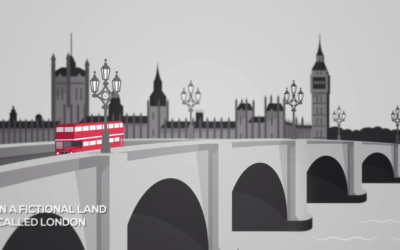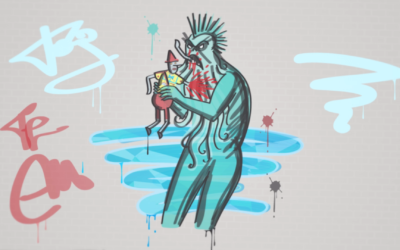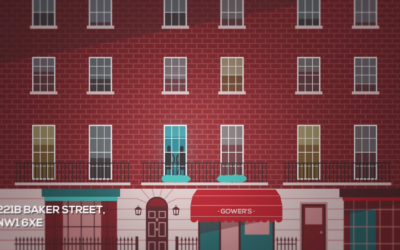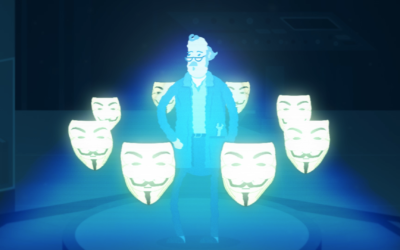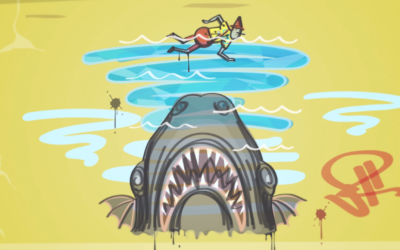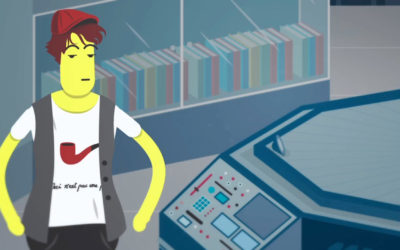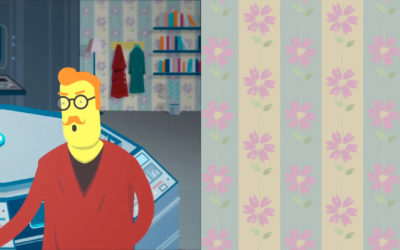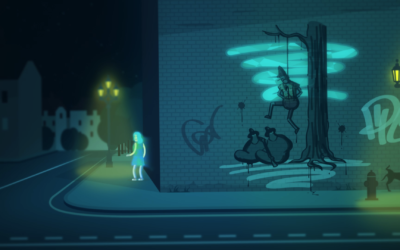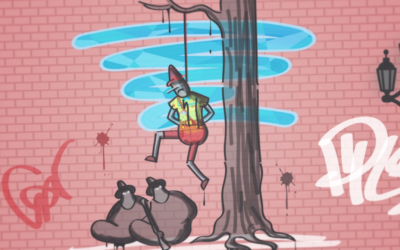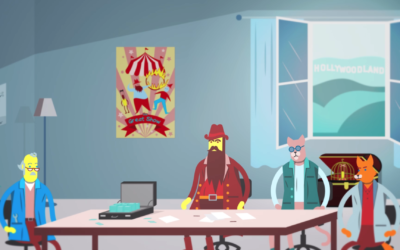10. THE UNCERTAIN MOTIVATION
Joseph, Sherlock Holmes and the Girl with the Light Blue Hair are all creators: Joseph draws and designs toys; Sherlock composes music; and the mysterious girl is an accomplished street artist. However, they all create for different reasons.
This Case File #10 considers the role that copyright plays in incentivising the creation of literary and artistic works, before inviting you to think about the different motivations each of our characters may have for creating their own work.
ECONOMIC ROLE OF COPYRIGHT
In common law jurisdictions such as the UK and the US the justification for copyright is often presented in economic terms. Copyright provides an economic incentive to encourage the creation and dissemination of cultural goods such as books, music, art and films. It does this by giving the creators of those works the right to prevent others from making use of their work without permission. Without the protection of the law, other people could simply make use of the work for free and the creator may not be able to earn a living from his or her work. And if creators weren’t able to earn money from their work, they may be discouraged from creating new work at all, which would have a negative effect on society as a whole.
However, it is understood that the copyright regime should also deliver significant benefit to the public as well. For one thing, by giving authors the right to control the use of their work, copyright encourages and incentivises the creation of new work which contributes to the encouragement of learning, the dissemination of knowledge and the promotion of culture. But also, copyright does not give creators absolute control over the use of their work: they are granted only certain economic rights, and these rights are subject to various exceptions. This means that, under the right circumstances, everyone is able to draw inspiration from, and make use of, existing copyright works in the creation of new work.
That copyright plays this dual role of securing private rights and public benefit was evident from the very start of the copyright regime. The first copyright act in the world was passed in the UK. Popularly referred to as the Statute of Anne 1710, it was passed ‘for the Encouragement of Learning by Vesting the Copies of Printed Books in the Authors or Purchasers of such Copies’. That is, the 1710 Act granted copyright to authors (by vesting the copies of printed books) for the public good (to encourage learning).
WHY PEOPLE CREATE
We are all creators, and we all create copyright works all the time. Whether you are writing an email, taking some photos or videos with your phone, or preparing an essay or report for school or for work, you are creating something that is probably protected by copyright. These may not be the kind of things that we normally think of as literary, artistic or musical works but they are still works protected by copyright. And obviously, we would create them whether or not the copyright regime exists.
So, while copyright provides an important incentive for the creation of certain types of work, it does not incentivise the creation of all types of copyright-protected work. Different people have different motivations for creating, and some people will always create whether copyright exists or not.
Joseph is a toymaker. He draws and designs toys for a living, and he sells his ‘beautiful, wonderful toy’ in order to be financially rewarded for his creative efforts. He creates work safe in the knowledge that the law provides him with economic rights in his work that he can exploit commercially.
On the other hand, Sherlock composes music because he enjoys it; it helps him think and he believes that ‘the work is its own reward’. He is not incentivised to create by the copyright regime as he is not interested in commercially exploiting his compositions. (Indeed, he doesn’t appear to know anything about copyright at all!) Rather he simply enjoys creating and composing music in the privacy of his home.
The mysterious Girl with the Light Blue Hair is also motivated to create, although her reasons for creating the ‘dreadful images’ are not as obvious as for Joseph or Sherlock. She does not appear to be creating her works of art for commercial gain. But neither is she simply creating for herself, as Sherlock does. She is creating work for public consumption, work that engages the public. Her works are a form of communication, but communication without any obvious economic agenda. As with Sherlock, the copyright status of her works does not appear to be a relevant consideration in motivating her to create.
FOR DISCUSSION: IS IT ALL ABOUT THE MONEY, MONEY, MONEY?
Do you agree that copyright protection helps creators, and that it encourages people to create? What if copyright did not exist? Would people still create? How would writers, artists and musicians make a living out of their creative works, if not by copyright?
Why do you think the Girl with the Light Blue Hair is creating her images featuring Joseph’s beautiful, wonderful toy?
Download the PDF version of Case File #10 – The Uncertain Motivation.
More Case Files
1. The Red Bus
The Adventure of the Girl with the Light Blue Hair starts with a red double-decker bus travelling across Westminster Bridge, with the Houses of Parliament in the background.
2. The Monster
One of the graffiti that scare the toymaker Joseph portrays a monster eating his ‘beautiful, wonderful toy’. The image of the monster is inspired by two different artistic works
3. The Baker Street Building
Sherlock Holmes and John Watson discuss Joseph’s case at 221B Baker Street. The above illustration is inspired by two sources…
4. The Anonymous Artist
Joseph, the toymaker, has asked the police to identify the culprit making ‘dreadful images’ of his toy, portraying it in violent situations.
5. The Terrible Shark
This illustration from our video depicts a terrible shark-like creature about to eat Joseph’s toy. It was inspired by two different images…
6. The Famous Pipe
The pipe has been associated with the image of Sherlock Holmes since Sir Arthur Conan Doyle’s (1859 – 1930) stories were first published in The Strand Magazine with illustrations by Sidney Paget (1860 – 1908).
7. The Matching Wallpaper
In the background of Holmes and Watson’s apartment you can see wallpaper with ‘flowers scattered over it in a somewhat impressionistic style’.
8. The Dreadful Images
The ‘dreadful images’ that scare Joseph, the toymaker, are graffiti drawn all over the ‘fictional land called London’. The illustration above, depicting Joseph’s toy hung from a tree, is based on an actual place in London.
9. The Improbable Threat
In trying to persuade Holmes to take Joseph’s case, Watson asks: ‘What if it’s a threat? That’s what the graffiti might mean.’ These eleven words are based on dialogue from The Blind Banker…
11. The Mutilated Work
In trying to persuade Holmes to take the case, Watson argues that: ‘If you were a professional musician, you wouldn’t want people copying or mutilating your work’.
12. The Hollywoodland Deal
Joseph explains to Holmes and Watson when and why the dreadful images of his beautiful, wonderful toy began to appear all over London. When ‘some guys’ from Hollywoodland approached him ‘to option a movie’…

